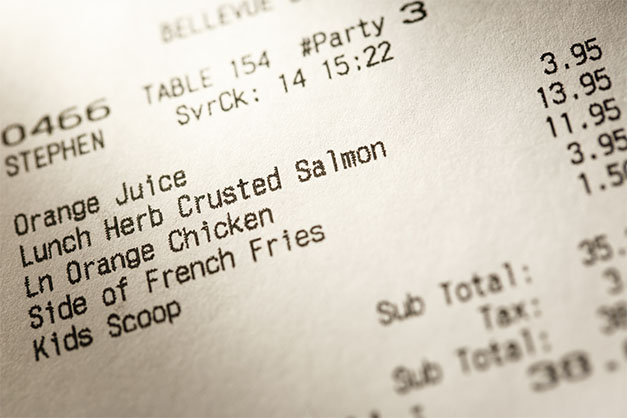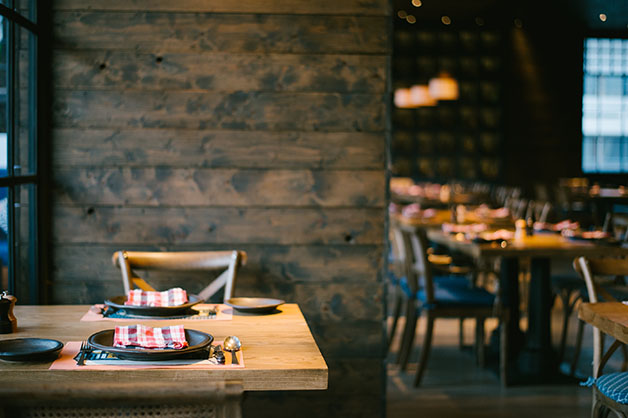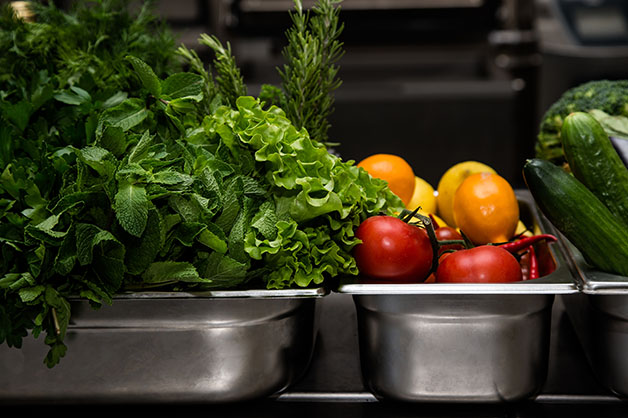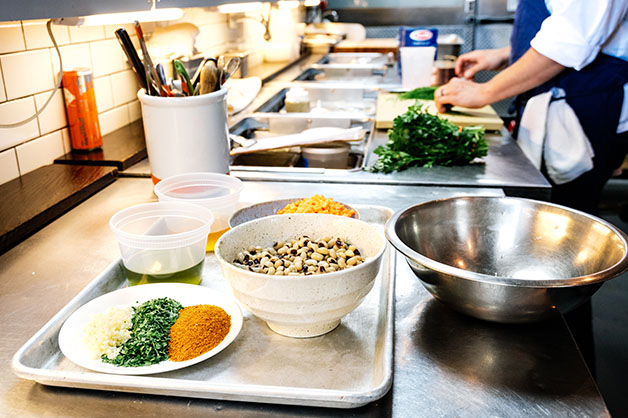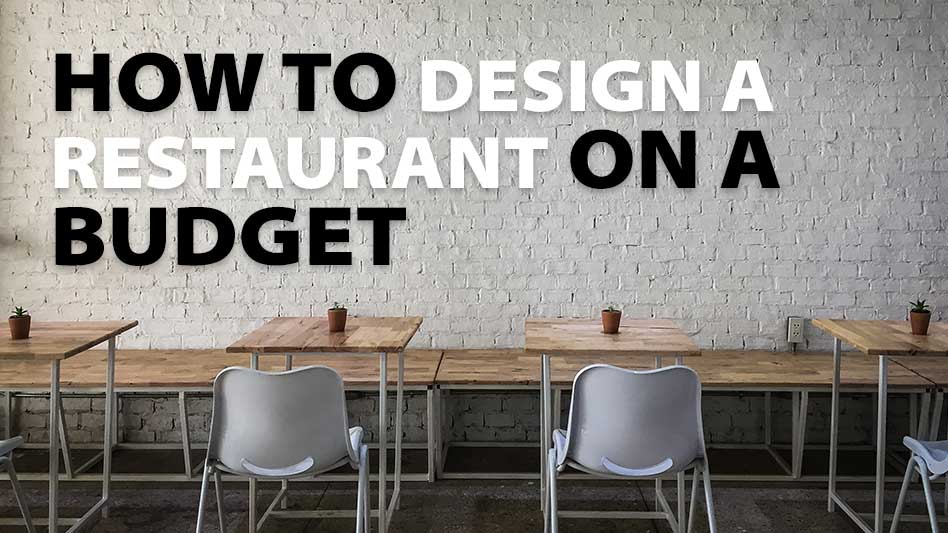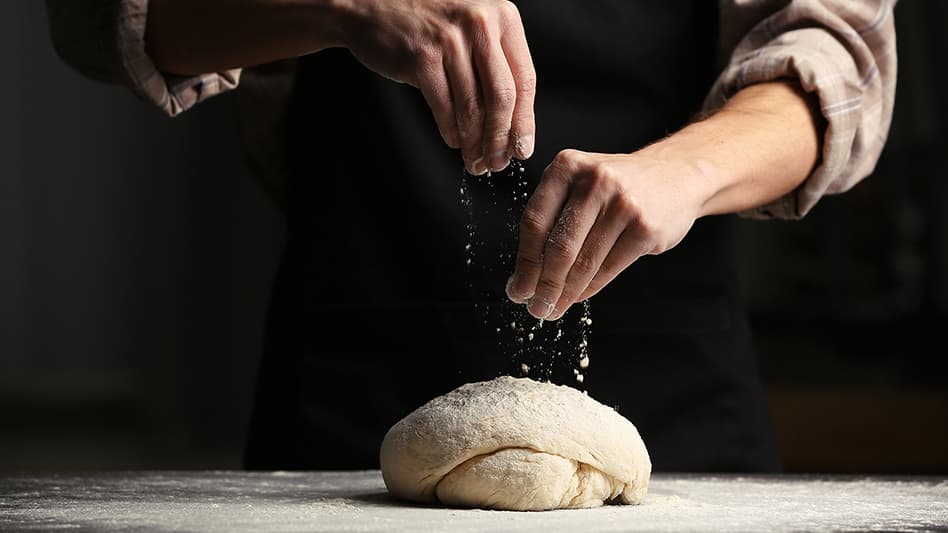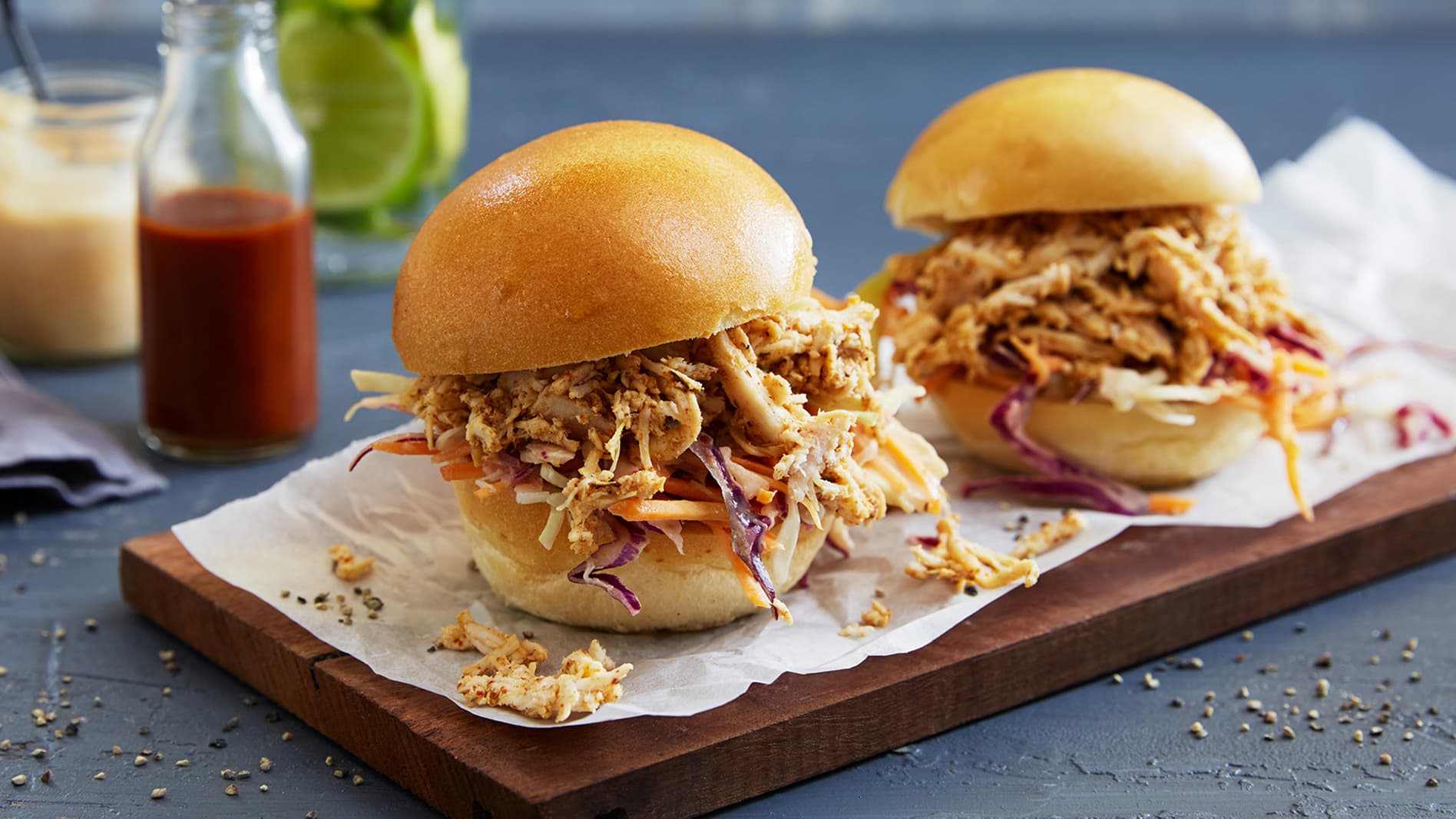Be inspired with recipes created by chefs.
Sign up for updates about products, special offers, news and promotional materials from Goodman Fielder.

Summary
No matter how good your customer service or menu is, if your food isn’t costed properly, your business will find it challenging to survive. We delve into the hidden factors in your menu that most restaurants and cafes overlook.
Effectively calculating the price of each item on your menu is a complex process. You need to consider the cost of bills, ingredients, staff salaries, and more. These are typically split into two key groupings:
- Indirect Expenses – Including all overheads
- Direct Expenses – the cost of your ingredients
Profit Margin
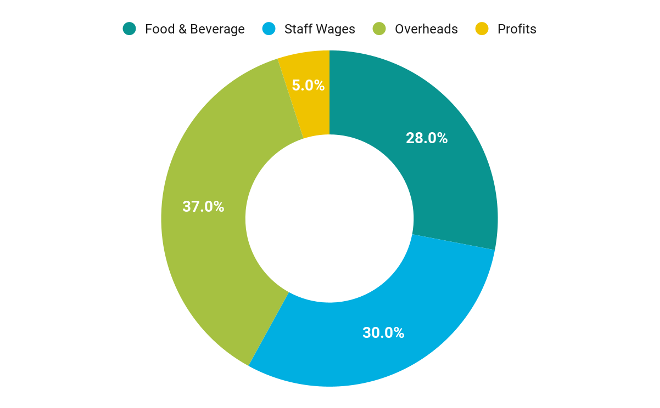
Most restaurants and other hospitality venues aim to keep their food and beverage costs at between 25-35% of their total revenue and their labour costs at 30%. On average, this leaves you with a gross profit of between 35-40% before your indirect costs are taken into account. However, thanks to the high costs of other overheads most hospitality venues struggle to take home a net profit of more than 5%. In fact, Restaurant & Catering’s Industry Benchmarking Report for FY 2020 identified that 27% of venues did not turn a profit in the last financial year, only 9.5% broke even, and of those that did return a profit, the returns were between 2-10%.
There are two main ways you can improve your profit margins: higher sales and fewer expenses.
To be able to successfully make meaningful changes to your sales and expenses you first need to accurately know the cost per serve for every dish and break down what your total costs look like when split into food costs, wages, and other overheads. Once you have a better idea of what your venue’s split looks like, you can determine where you need to cut costs or where you can increase prices.
Menu Matrix
One key action you can take once you have a great understanding of your venue’s financial split is to build out a menu matrix. This involves reviewing each item on your menu and identifying its popularity and profitability – which can be broken down into four categories:
- Stars: high-profit, popular menu items to be emphasised and featured prominently,
- Cash cows: low-profit, popular menu items that customers don’t need to be reminded of,
- Puzzles: high-profit, low popularity items that may need to be refreshed and promoted more,
- Dogs: low-profit, low popularity items that need support to be pushed into one of the other categories above.
Once you’ve reviewed each item on your menu you can focus your efforts on highlighting your stars and puzzles and amending or phasing out your dogs.
Indirect Expenses
Indirect expenses cover all of the overheads involved in running your venue. The factors you need to take into consideration will vary from venue to venue and month to month. Some of the things you need to take into consideration include:
- Equipment and Furniture: this may include loan repayments and leases,
- Supplies: including cleaning supplies, containers, and more,
- Utilities: gas, electricity, and water,
- Fees: rent, taxes, delivery, insurances, licenses, and more,
- Staff salaries
- Marketing costs
Each of these will cut into your net profit, therefore it is vital that your keep these costs in mind when you’re pricing out your menu.
Direct Expenses
As a direct expense, costing your ingredients may seem like the most straightforward factor to calculate when pricing your menu, however, there are a few hidden costs you need to keep in mind.
Seasonal Pricing
When it comes to certain ingredients, a dish you price up today could cost you a vastly different amount next week. Whether it is a lamb shoulder or a box of cucumbers, you need to be wary of the seasonality of the products you use in the kitchen. Recalculating your dishes regularly and making changes that are mindful of the fluctuating prices is key to ensure you don’t dish up a loss.
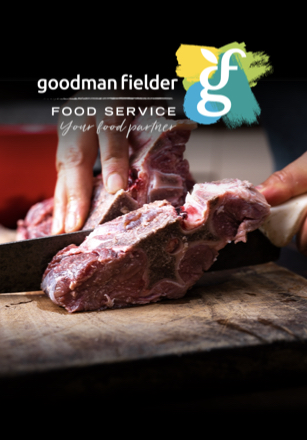
Prep & Cooking Loss Cheat Sheet
Goodman Fielder Food Service is dedicated to being your food partner. Download our prep waste and cooking loss cheat sheet here.
Missed ingredients
The egg wash you use in a chicken schnitzel and the flour and olive oil you use when making pasta are all ingredients that are easily overlooked when it comes to pricing your menu. These forgotten elements quickly add up throughout the working week and can end up hurting your venue’s already small profit margin.
Wastage
Most restaurant owners and chefs know there are two types of food waste in hospitality venues: pre-consumer waste and post-consumer waste. Post-consumer waste refers to leftovers thrown out after the dish reaches the customer. Pre-consumer waste is what is discarded before the food is served – this makes up 74% of food wastage. Pre-consumer waste is often considered to include spoilage, over prep, contamination and poor product quality. This level of waste takes a huge bite out of the profit of most venues and must be accounted for when you price your menu.
You can reduce the costs of wastage by first conducting a waste audit to identify the biggest culprits in your kitchen. Other methods to reduce waste include:
- Creating recipes cards for each dish on your menu with specific measurements to prevent over flourishing and track quantities,
- Repurposing “scraps” into new dishes or bases,
- Ensure proper storage to prevent spoilage. This includes keeping products at the correct temperature, adequate reheating, food labelling strategies, and not overfilling refrigerator units.
Cooking Loss and Prep Waste
When we consider wastage, we often look to spoilage and over-preparation as the biggest culprits, however, there is a major hidden cost that is often overlooked.
Cooking loss and prep waste can completely change the forecasted price of your ingredients; however, venues rarely consider the impact on their bottom line. Take prawns as an example. When you peel a prawn, it’s not uncommon to lose as much as 50% of the prawn’s original weight (prep waste). Then in the cooking process, the prawn may shrink by up to 23% (cooking loss). The kilogram of prawns you started with is now only 385 grams. This brings your actual cost per kilogram of useable prawns from $29.50 per kilogram to $75.32 per kilogram. A great example here is a recipe for prawn cocktails that may call for 100g of cooked prawns – in reality, this is closer to 260 grams of raw prawns.
When taking into consideration your cooking loss and prep waste, you can uncover the true cost of your ingredients. Ensure you consider where you can reuse the offcuts from your ingredients to create stocks, stews, soups, and more, and make certain that you cost up your menu so you don’t dish up a loss. Check out this chef resource to get an idea of the yield you can expect on various common produce items in your kitchen.
A few other common ingredients to consider:
- Brisket: for brisket, you need to trim the fat and smoke the meat. You’re looking at 10% in prep waste and 30% in cooking loss. This brings you weight-after-waste from 1kg to 630g – or financially, a $9.90 cost per kilogram to $15.71 per kilogram.
- Barramundi: you purchase the fish for around $18.50 per kilogram, but you lose 40% on the carcass and bones when you fillet a fish, plus around 25% in the cooking process. This jumps your costs up to $41.11 per servable kilogram of fish, or 1 kilogram of fish to only 450 grams.
- Beef Rump: you will lose around 10% in prep waste to cleaning, portioning, silver skin, and sinew. When you cook the beef rump you’re looking at shrinkage of around 25%. This takes your cost from $16 per kilogram to $23.70 per kilogram. In terms of weight, you might start with 1 kilogram, but your weight-after-waste is more like 675 grams.
- Onions: you purchase onions for around $1.09 per kilogram. For prep, you trim the ends and peel the skin losing 11% to prep waste. Next, you caramelise the onion where you lose 66% to cooking loss. The kilogram of onion you started with is now only 393 grams, and your actual cost has rocketed from $1.09 per kg to $3.60 per kg. You might think 10kg of onions is costing you $10.90, but in reality, you’re looking at $36.
- Chicken Thigh: for raw chicken thigh, you might pay $8.50 per kilogram. You will lose around 10% of the original weight to prep (excess fat and sinew). Chicken thigh also shrinks by around 24% when cooked. Your $8.50 kilogram of chicken thigh is now only 684 grams, driving up the true cost to $12.43 per kg.
- Iceberg Lettuce: while there is no cooking loss here, you need to consider the prep loss when you remove the stalk and dead leaves. This is often around 14%, taking 1 kilogram of lettuce to only 860 grams. Or $2.30 of lettuce to $2.67 per kilo.
- Potatoes for Fries: to prepare hand-cut chips a chef must first peel and clean the potatoes, cut to size, and fry. You can lose around 2% to prep waste and 31% to cooking loss/shrinkage. This takes your 1kg of potatoes to 676 grams of fries. Or, you $2.30 per kg of potatoes, to $3.25 per kg of fries.
- Tomatoes: prepping tomatoes involves topping and tailing and removing the core. You’re looking at a prep waste of 8% taking your 1kg of tomatoes to 920 grams and increase the cost per kilo from $3.20 to $3.48. This is further exacerbated when cooked due to tomatoes high water content and propensity to shrinkage.
We’ve consulted directly with chefs to provide these costing examples which are accurate the time of publishing.
Conclusion
You cannot run a profitable restaurant without a well-costed menu – no matter how good your customer service is or how tasty your food is. Calculating your menu pricing is a complex process that needs to factor in so many variables within your indirect and direct expenses. Next time you go to cost out your menu, make sure you keep an eye on seasonal pricing, easy-to-overlook ingredients, and wastage – especially prep waste and cooking loss.
Once you have a strong idea of the true cost of your menu, check out Goodman Fielder Good Service’s new completely free recipe calculator to help you devise the right quantity of ingredients and the right menu price for each of your venue’s dishes.
Related Ideas
25th March 2023
The Importance of Mentorships in Hospitality
The hospitality industry is changing at a pace we have never seen before. To make these challenging times slightly easier, a greater emphasis needs to be placed on mentoring and training the younger generation of chefs to ensure the future of hospitality is stronger than ever before.
25th November 2022
Mental Health in Hospitality: How One Conversation Can Save a Life
Renowned chefs Scott Pickett and Massimo Mele talk about their own battles with mental illness and why they are now opening up.
9th March 2022
How to Design a Restaurant on a Budget
It’s no secret that opening a restaurant is expensive. But what if you can do it while sticking within your budget?

